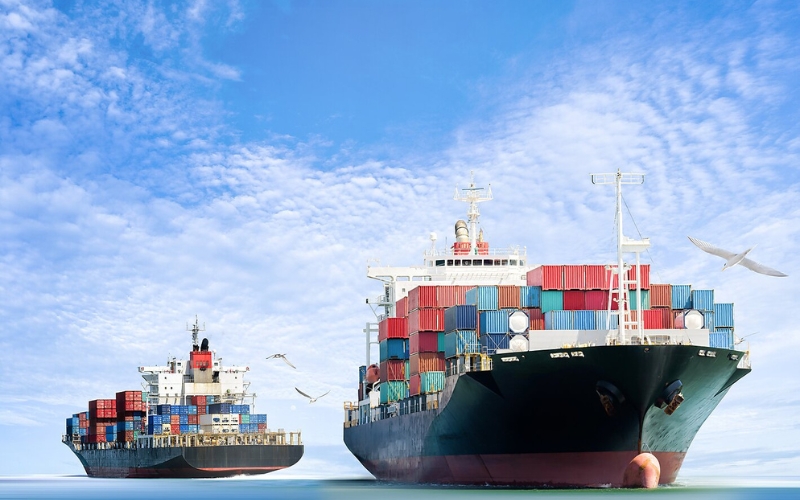By Phil Kafarakis, IFMA The Food Away from Home Association, President & CEO
February 2025
Sign Up for Our Newsletters

Maintaining a stable economy in a country as large and resource-wealthy as ours isn’t so easy. No matter what you may personally believe about the place of the U.S. in the larger global economy, our engagement there matters and will continue to matter. As for business, existing in a global network of interrelated trade is wildly complex.
So, when we face a series of contradictory tariff decisions from our Executive Branch, it’s anxiety-producing. Stress isn’t good for our health or our businesses.
Getting inflation, listed at 2.9% in December, to the Fed target of 2%, is going to take a series of miracles. And that’s without any sort of tariff war!
We’re fairly certain that raw materials, particularly core items, will continue to be expensive. Between continuing inflation and disruptive weather patterns, the growing cycle has left food manufacturers weighing whether consumers will continue to buy products at these increased price points. So, you may have to start considering alternate ingredients.
If tariff hikes take place in the late spring, the growing season will be immediately impacted. Affected countries, particularly Mexico, aren’t going to stand around and take it. Prepare for higher commodity prices.
Imposing tariffs on Mexico may be a real kick in the head for our industry. After all, Mexico is the largest supplier of fresh produce to the U.S., accounting for about 60% of U.S. fresh fruit and vegetable imports. The exact percentage varies by crop, but here are some key figures:
- Avocados: Over 90% of U.S. avocado imports come from Mexico.
- Tomatoes: Around 70-80% of fresh tomatoes in the U.S. are imported from Mexico.
- Peppers: More than 60% of U.S. pepper imports come from Mexico.
- Cucumbers & Squash: Mexico supplies about 75% of these imports
Overall, Mexico plays a critical role in the U.S. produce supply chain, especially during winter months when domestic production is lower.
If the U.S. imposed tariffs on EU food and agricultural imports, the impact would be significant, affecting both EU exporters and U.S. consumers. A 20% tariff on $26 billion in EU food imports would result in $5.2 billion in additional import duties. For example:
| Category |
EU Exports to U.S. |
20% Tariff Cost |
Potential Export Decline |
Wine & Spirits
Champagne, French/Italian Wines, Scotch Whiskey |
$6B |
$1.2B |
$500M - $1B |
Cheese & Dairy
Parmigiano, Brie, Gouda, Butter, Yogurt |
$2B |
$400M |
$200M - $400M |
Olive Oil
Spain, Italy, Greec |
$1.8B |
$360M |
$180M - $360M |
Chocolate & Confectionery
Belgian, Swiss, Italian Brand |
$2B |
$400M |
$200M - $400M |
| Pasta, Baked Goods & Processed Foods |
$2B |
$400M |
$200M - $400M |
For our industry, that would mean notably higher prices for all these items (and more), a real push to switch to domestic or non-EU suppliers, and for any companies relying on high-end European ingredients, the sort of cost increases that may drive away customers.
However, all is not doom and gloom, many companies in the food industry built strong contingency plans during and directly after the pandemic months to strengthen and rebuild their supply chains. That included expanding their supplier base and distribution partners, as well as creating more flexible menus. Driving consumers towards “replacement” products, away from traditional menu standard items, can offer some relief for companies if forced to deal with immediate policy changes that impact produce and/or ingredients.
Although I believe it is most likely that there will be new tariffs of some kind, it seems likely they will be much more product- or industry-specific, focusing on industrial goods like steel, cars, and technology parts rather than sweeping the food categories. Especially given current U.S. consumer pricing concerns on groceries and daily items, it’s more likely POTUS will shift gears and target more B2B impact that takes longer to reach consumer pocketbooks.
Even without imposed tariffs, it seems very likely that food prices will soar beyond the current accelerated levels. We clearly see that those prices are pinching consumer’s pockets. You think the price of eggs is high? Ha! To quote a favorite American idiom of mine, you ain’t seen nothing yet.
And, as much as our industry is in the news about high costs, the price of cars and the hit to jobs in the auto industry is going to really upside our economy. The Ford CEO was recently quoted in the NY Times, saying, ““A 25 percent tariff across the Mexico and Canadian border will blow a hole in the U.S. industry that we have never seen.”
So, given the fast-moving “will-he or won’t he” cycle we find ourselves in, it seems clear that we must all keep our eyes on the tariff plotline.
Bringing you provocative perspective from inside the food industry is what I do. For more than 30 years I have been operating at the cross-roads of the global food ecosystem. An executive insider from the food manufacturing community and an industry advocate, I cover the amazing transformation taking place in the food industry. The comprehensive and unique perspective on what moves food companies to success or failure that I share, is driven by confidential access - from emerging innovators to the board rooms of multinationals, and everyone in between. Currently serving as the President & CEO of IFMA The Food Away from Home Association.